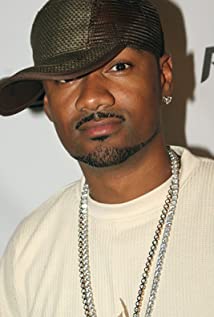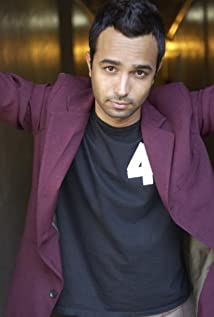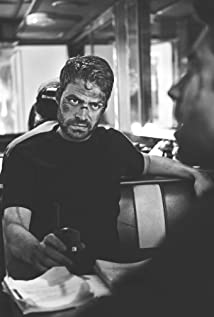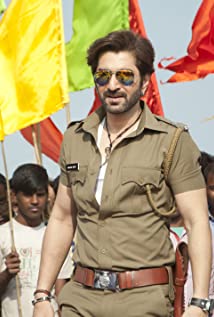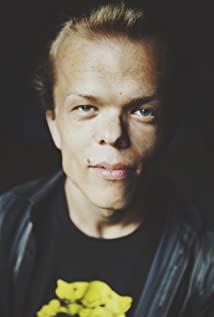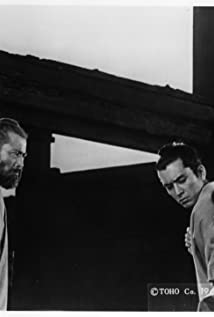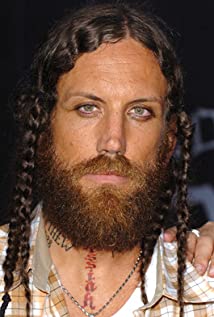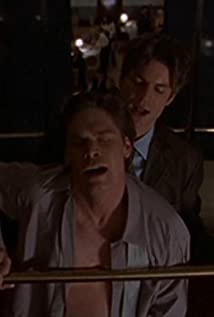Ben Turpin was born on September 19, 1869 in New Orleans, Louisiana, United States, is Actor, Director, Soundtrack. First of all, the cross-eyed comedian of silent days was not born that way. Supposedly his right eye slipped out of alignment while playing the role of the similarly afflicted Happy Hooligan in vaudeville and it never adjusted. Ironically, it was this disability that would enhance his comic value and make him a top name.Ben Turpin was born in New Orleans in 1869, the son of a French-born confectionery store owner. When 7 years old, his father moved to New York's lower East Side. A wanderlust fellow by nature, Turpin lived the life of a hobo in his early adult years. He started up his career by chance while bumming in Chicago where he drew laughs at parties. An ad in a newspaper looking for comedy acts caught his eye and he successfully booked shows along with a partner. Going solo, he performed on the burlesque circuit as well as under circus tents and invariably entertained his audiences by doing tricks, vigorous pratfalls and, of course, crossing his eyes. One of his more familiar sight gags was a backwards tumble he called the "108." He happened upon the Happy Hooligan persona while playing on the road and kept the hapless character as part of routine for 17 years.He started in films at age 38 in 1907, joining Essanay Studios shortly after the company began operating in Chicago. He also became their resident janitor for a spell. He stayed with the company for two years but remained on the edges of obscurity. Appearing sporadically in silent comedy shorts, he typically played dorky characters who always did something wrong. His big break came when he returned to Essanay and was introduced to Charles Chaplin, who immediately took to him and set him up with Mack Sennett. By 1917 Sennett had turned Turpin into a top comedy draw. With his trademark crossed eyes and thick mustache, he made scores of slapstick films alongside the likes of Mabel Normand and 'Roscoe 'Fatty' Arbuckle', among others. Most notable were his films that parodied hit movies of the day such as his The Shriek of Araby (1923), in which his character lampooned Rudolph Valentino. Turpin's true forte was impersonating the most dashingly romantic and sophisticated stars of the day and turning them into clumsy oafs.Turpin retired from full time acting in 1924 to care for his ailing wife Canadian comedy actress Carrie Turpin (nee LeMieux). After her death the following year he returned but his marquee value had slipped drastically. The advent of sound pretty much marked the end to his special brand of physical comedy. He was only glimpsed from then on, mostly in comic cameos for other top stars such as a bit as a plumber with Laurel & Hardy in Saps at Sea (1940), his last. He died of heart disease that same year.
Ben Turpin is a member of Actor
Does Ben Turpin Dead or Alive?
As per our current Database, Ben Turpin has been died on July 1, 1940(1940-07-01) (aged 70)\nSanta Monica, California, U.S..
🎂 Ben Turpin - Age, Bio, Faces and Birthday
When Ben Turpin die, Ben Turpin was 70 years old.
| Popular As |
Ben Turpin |
| Occupation |
Actor |
| Age |
70 years old |
| Zodiac Sign |
Libra |
| Born |
September 19, 1869 ( New Orleans, Louisiana, United States) |
| Birthday |
September 19 |
| Town/City |
New Orleans, Louisiana, United States |
| Nationality |
United States |
🌙 Zodiac
Ben Turpin’s zodiac sign is Libra. According to astrologers, People born under the sign of Libra are peaceful, fair, and they hate being alone. Partnership is very important for them, as their mirror and someone giving them the ability to be the mirror themselves. These individuals are fascinated by balance and symmetry, they are in a constant chase for justice and equality, realizing through life that the only thing that should be truly important to themselves in their own inner core of personality. This is someone ready to do nearly anything to avoid conflict, keeping the peace whenever possible
🌙 Chinese Zodiac Signs
Ben Turpin was born in the Year of the Snake. Those born under the Chinese Zodiac sign of the Snake are seductive, gregarious, introverted, generous, charming, good with money, analytical, insecure, jealous, slightly dangerous, smart, they rely on gut feelings, are hard-working and intelligent. Compatible with Rooster or Ox.
Biography/Timeline
1869
Turpin was born in New Orleans, Louisiana on September 19, 1869, the son of a candy store owner, Ernest Turpin, and Sarah Buckley.
1907
Ben Turpin first appeared on film in 1907 for Essanay Studios in Chicago in various small parts and comic bits. In addition to his on-screen work, he worked as a carpenter and janitor for Essanay. In the 1909 film Mr. Flip, Turpin receives what is believed to have been the first pie-in-the-face. By 1912 he was an established – if not major – screen personality, giving interviews and writing articles for the new fan magazines (the first of which had started the year before).
1915
Charlie Chaplin joined the Essanay company in 1915, and the studio made Turpin his second Banana. Chaplin was maturing as a filmmaker, working slowly and intuitively. Turpin, however, was impatient with Chaplin's methods. The earthy Turpin understood straightforward slapstick more than comic subtlety. The Chaplin-Turpin duo didn't last long, with Chaplin abandoning Chicago for California. Turpin does share one additional credit with Chaplin: after Chaplin filmed Burlesque on Carmen in two reels, Essanay filmed new scenes with Turpin to pad the picture into a featurette, doubling its length.
1917
In 1917 Ben Turpin joined the leading comedy company, the Mack Sennett studio. Turpin's aptitude for crude slapstick suited the Sennett style perfectly, and Sennett's Writers often cast the ridiculous-looking Turpin against type (a rugged Yukon miner; a suave, worldly lover; a stalwart cowboy; a fearless stuntman, etc.) for maximum comic effect. Through the 1920s his roles often spoofed serious actors and celebrities of the time – e.g., "The Shriek" for "The Sheik" – and Turpin became one of film's most popular comics. Turpin appeared in both short subjects and feature films for Sennett. Delighted with his success, he took to introducing himself with the phrase, "I'm Ben Turpin; I make $3,000 a week."
1920
Turpin famously bought a $25,000 insurance policy with Lloyd's of London, payable if his eyes ever uncrossed. A 1920 version of the story had his eyes insured for $100,000. How serious this was is open to question; such publicity Stunts centered around a performer's "trademark" were Common at the time.
1928
Sennett terminated most of his staff's contracts in 1928, and closed the studio to retool for the new talking pictures. Turpin was signed by the low-budget Weiss Brothers-Artclass company, perhaps the most ambitious coup that Artclass ever attempted. Turpin made two-reel comedies there for one year. Artclass usually traded on his peculiar vision with titles like Idle Eyes and The Eyes Have It.
1929
1929 saw many silent-film stars uncertain about their Future employment, with the new talking pictures requiring new skills and techniques. Ben Turpin chose to retire. He had invested his earnings in real estate, and, being highly successful at this, had no financial need for more work. Producers soon sought him out for gag appearances in films. He commanded a flat fee of $1000 per appearance, regardless of whether it was a speaking role or a fleeting cameo. Among the most memorable of these cameos was in Paramount's Million Dollar Legs (1932) starring W. C. Fields, Jack Oakie, and Susan Fleming.
1935
He starred in only one more short subject, Keystone Hotel (Warner Bros., 1935), a two-reel reunion of silent-era comedians. Turpin's speaking voice was a gritty rasp that retained elements of the New Orleans "Yat" accent of his youth. His last feature film was Laurel and Hardy's Saps at Sea in 1940, in which his cross-eyed face served as a joke punchline. He was paid his $1000 for one quick shot of his face and just 16 words of dialogue. Death prevented his scheduled appearance in Charlie Chaplin's The Great Dictator.
1939
Turpin and Sennett both appeared as themselves (in Technicolor) in Hollywood Cavalcade (1939), a partly fictionalized movie about the silent-film era. This movie contains a sequence in which Turpin reports for work and prepares to go onto the set in character. In the dressing room he picks up a hand mirror and checks his reflection as he deliberately crosses his eyes as extremely as possible. In this sequence, it can be seen that Turpin's left eye was actually normal when he was not performing, and that he intentionally crossed it (to match his misaligned right eye) as part of his screen character.
1940
Ben Turpin died July 1, 1940 of a heart attack and was interred in the Forest Lawn Memorial Park Cemetery in Glendale, California, following a Requiem Mass at the Church of the Good Shepherd in Beverly Hills. He was eulogized as "a fine member of his church, strong in his faith" by Father J. P. Concannon. His pallbearers included Andy Clyde, Billy Bevan, James Finlayson, and Charlie Murray.
1969
In the film The Comic (1969), Mickey Rooney plays a fictional silent-film Comedian named "Cockeye Van Buren", who is genuinely cross-eyed. Although this character does not otherwise resemble Turpin, the handicap given to Rooney's role is clearly inspired by Turpin.
Ben Turpin trend












